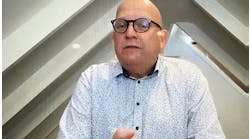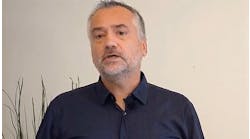“What we’re investing in today will carry us forward to the future of process automation. However, we’ll never leave any end users behind, and we’ll always make a path forward for them.” Schneider Electric’s Michael Martinez on the company’s pledge to accommodate innovation while preserving its customers’ intellectual property investments.
The distributed control system (DCS) used to represent the whole world of the process industry application it monitored and managed. However, in recent years, the larger worlds of enterprise and business levels, Ethernet networks, and the Industrial Internet of Things (IIoT) and cloud-computing services have been leaning into the DCS, linking to its components and accessing its data.
At the same time, more plant-floor devices are equipped with internal microprocessors, Ethernet ports, wireless connections and software that can reach up to the Internet, cloud and other networks, and often do so automatically. This has been a worrisome situation for end users, who know the benefits of more links also means added vulnerabilities to potential cybersecurity-related probes, intrusions and attacks.
To provide Industry 4.0 capabilities securely to new and existing users, Schneider Electric released its EcoStruxure Automation Expert software in 2020. The software works closely with the company’s long-proven EcoStruxure Foxboro DCS. EcoStruxure Automation Expert is a new cornerstone of the overall EcoStruxure ecosystem that’s described as a software-centric industrial automation system that can create step-change improvements throughout complete operational lifecycles.
“EcoStruxure Automation Expert is part of our decentralized approach to native operations technology (OT) and information technology (IT) integration that we’re calling Universal Automation,” said Michael Martinez, EcoStruxure Foxboro DCS leader, Schneider Electric. “Our vision is for it to be an app store for automation that provides plug-and-produce automation software that’s decoupled from hardware. It also complies with the IEC 61499 standard for using function blocks for process measurements and control systems, and is designed to make operations more agile, reduce how much software is needed, and make process applications more cybersecure.”
Martinez presented the session, “EcoStruxure Foxboro DCS—What’s Possible” on the opening day of the virtual conference, Innovation Talks: 2021 Foxboro and Triconex User Groups. He explained that decoupling automation software from its underlying hardware allows EcoStruxure Automation Expert to help distribute many EcoStruxure Foxboro DCS functions across workflows and I/O systems where they’re needed, but with fewer constraints and hurdles than had to be overcome in the past.
“We’re not talking about replacing the DCS yet. EcoStruxure Automation Expert software is only being used for monitoring in non-critical applications,” added Martinez. “However, it’s also proving how Universal Automation can be useful in reality.”
EcoStruxure Foxboro DCS and EcoStruxure Automation Expert can coordinate their capabilities for users because they’re integrated by several common threads. For example, EcoStruxure Foxboro DCS is characterized by OPC UA communications protocol, EcoStruxure power and process functions, edge I/O tools, and I/O card migration. Meanwhile, EcoStruxure Automation Expert also uses OPC UA, but achieves added efficiency and operations effectiveness.
Our editors are reporting live from the virtual events. Keep up-to-date with the latest news from the event here!
“What we’re investing in today will carry us forward to the future of process automation. However, we’ll never leave any end users behind, and we’ll always make a path forward for them,” said Martinez. “This will be enabled by solutions that are future-proof, and also by function and control blocks that can be moved from one process application to another. So, even as users adopt EcoStruxure Automation Expert software, they can also stay with their existing Foxboro DCS, and retain the one vendor they’ve always relied on.
“In short, EcoStruxure is getting bigger than the usual DCS. It’s letting users gain more capabilities by integrating with AVEVA software and its 3D designs, training systems and simulations. However, even as we innovate, we’re continuing to future-proof these new tools, and make certain the future will be open, secure and scalable. This means we can provide users with apps and software that don’t require lots of coding and can let them make use of applications they can build once and easily deploy to multiple platforms.”






